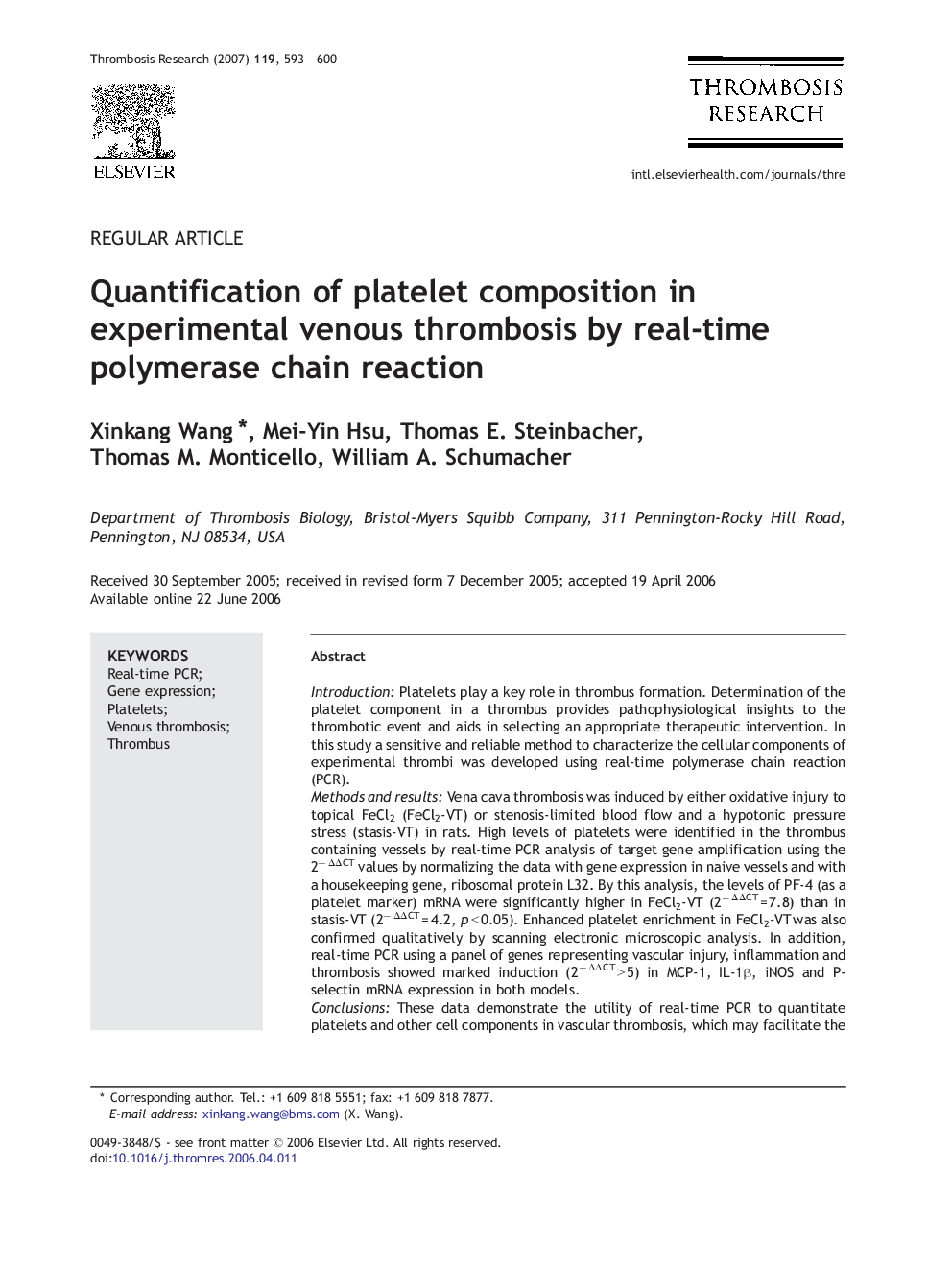| Article ID | Journal | Published Year | Pages | File Type |
|---|---|---|---|---|
| 3029918 | Thrombosis Research | 2007 | 8 Pages |
IntroductionPlatelets play a key role in thrombus formation. Determination of the platelet component in a thrombus provides pathophysiological insights to the thrombotic event and aids in selecting an appropriate therapeutic intervention. In this study a sensitive and reliable method to characterize the cellular components of experimental thrombi was developed using real-time polymerase chain reaction (PCR).Methods and resultsVena cava thrombosis was induced by either oxidative injury to topical FeCl2 (FeCl2-VT) or stenosis-limited blood flow and a hypotonic pressure stress (stasis-VT) in rats. High levels of platelets were identified in the thrombus containing vessels by real-time PCR analysis of target gene amplification using the 2− ΔΔCT values by normalizing the data with gene expression in naive vessels and with a housekeeping gene, ribosomal protein L32. By this analysis, the levels of PF-4 (as a platelet marker) mRNA were significantly higher in FeCl2-VT (2− ΔΔCT = 7.8) than in stasis-VT (2− ΔΔCT = 4.2, p < 0.05). Enhanced platelet enrichment in FeCl2-VT was also confirmed qualitatively by scanning electronic microscopic analysis. In addition, real-time PCR using a panel of genes representing vascular injury, inflammation and thrombosis showed marked induction (2− ΔΔCT > 5) in MCP-1, IL-1β, iNOS and P-selectin mRNA expression in both models.ConclusionsThese data demonstrate the utility of real-time PCR to quantitate platelets and other cell components in vascular thrombosis, which may facilitate the characterization and thus therapeutic intervention of a particular thrombotic event in both preclinical animal models and clinical conditions.
